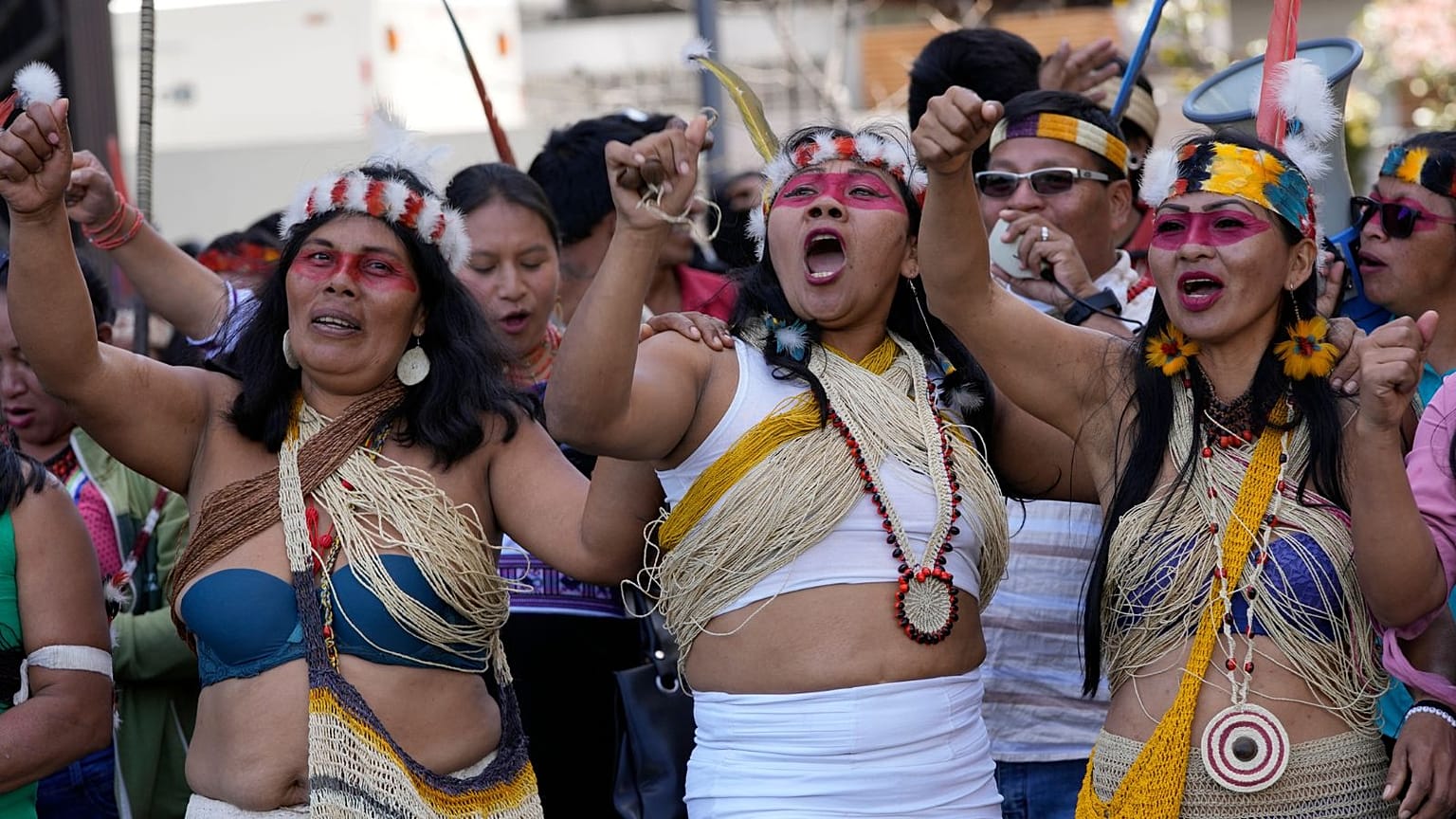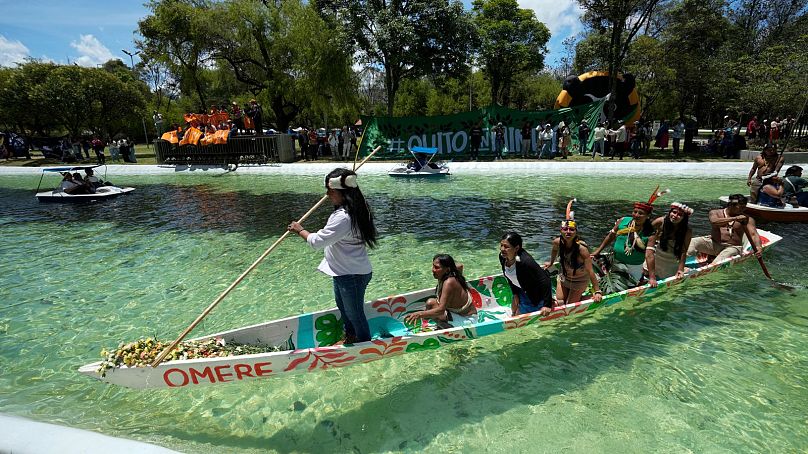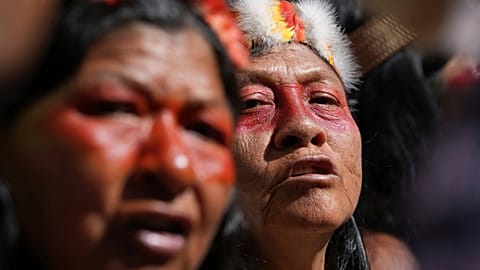Supporters were jubilant last year when almost 60 per cent of voters supported the referendum on ending drilling.
Ecuadorians made history when they voted to stop oil drilling in the heart of the Amazon. But 12 months on, there is little sign of the industry leaving Yasuni National Park, a biodiversity hotspot east of Quito.
In a statement on Wednesday, the Ministry for Energy and Mines announced it had closed one of hundreds of wells in the area known as the 43-ITT block.
However, the government last week asked the constitutional court for an extension of five years and five months for the state-run oil company Petroecuador to cease operations entirely.
Following the historic referendum last August, in which 60 per cent of people voted to stop drilling in the block, Ecuador’s government was given until the end of August 2024 to do so.
The Ecuadorian government does not get to set its own timeline and has shown little political will to close operations, said Kevin Koenig, climate and energy director for the nonprofit Amazon Watch, in response to Wednesday’s statement.
“The government is bound by its obligations to the constitutional court, which gave it a year to close 227 wells. ... The fact that they closed one yesterday does not mean that they are complying with the court order," Koenig said in a call from Yasuni National Park yesterday.
“They're not meeting their judicial obligation to the court, they're not fulfilling the mandate of the Ecuadorian people and they're not respecting the rights of the Waorani,” he said.
Yasuni National Park is one of most biodiverse regions in the world
The national park is a Unesco-designated biosphere reserve. Besides the Waorani, it is home to two of the world’s last Indigenous communities living in voluntary isolation, the Taromenane and the Tagaeri people.
The oil industry has been operating in the northern Ecuadorian Amazon for over five decades, according to nonprofit Amazon Watch, which said major oil spills have been frequent and at one stage Petroecuador averaged a spill a week.
Koenig said the spills translate into elevated levels of cancer, respiratory ailments, miscarriages and other health problems for people living nearby.
Juan Bay, president of the main Waorani organization in Ecuador, known as NAWE, is leading a delegation to the Ecuadorian capital to speak to Congress on Friday. He said his people want to be included in the process.
“The decision of the Ecuadorian people was a relief for the Waorani people, because they see that for six decades, oil has not been a development, it has not been a change, but has brought death," he said.
When is the government’s plan to stop drilling in Yasuni National Park?
On Wednesday (28 August) the government said it had dismantled the B-56 well.
“I have come to verify that the decision of last year’s referendum, where the citizens voted in favor of the closure of this field, is being complied with," head of the ministry, Antonio Goncalves, said. “To comply with the closure of the ITT is not an easy job, it requires special and technical planning.”
The wells should all go offline by December 2029, the government has previously said.
Ending oil drilling at the 43-ITT oil block could cost $1.3 billion (around €1.2 billion), according to government estimates.
Oil accounts for nearly one-third of Ecuador’s GDP, and its economy is struggling to meet its domestic debt obligations.
Ecuador's Ministry for Energy and Mines and Petroecuador did not respond to messages from AP seeking comment.



















